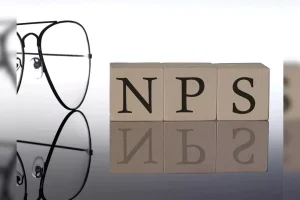Imagine seamlessly streaming your favorite movie from your laptop to your brand new smart TV with just a click, or using your voice assistant to simultaneously turn on your TV, sound system, and Blu-ray player for movie night. This kind of harmonious and hassle-free home entertainment experience is possible thanks to device discovery protocols.
Device discovery protocols are special network languages that allow compatible products to detect each other’s presence and share information and controls. By enabling these capabilities, you can transform a disjointed collection of electronics into an orchestra of perfectly synchronized sound and vision.
Understanding Device Discovery Options
If you’ve ever struggled to connect a new gadget with your existing gear, device discovery can seem like magic. But several key protocols are working behind the scenes to remove headaches from the setup process.
Universal Plug and Play (UPnP)
UPnP allows devices like computers, smartphones, speakers, TVs, and more to automatically discover and communicate with each other over WiFi or an Ethernet network. It lets hardware dynamically join networks, obtain addresses, convey capabilities, and enable seamless control between compliant products.
Simple Service Discovery Protocol (SSDP)
SSDP handles the messaging functions that facilitate UPnP’s plug-and-play experience. It enables devices to broadcast availability on the network, describe functions, and learn what other hardware can do.
Digital Living Network Alliance (DLNA)
Whereas UPnP offers general device interoperability, DLNA focuses specifically on the seamless sharing of media like music, movies, and photos. The alliance defines standards to stream content between servers, mobile devices, TVs, game consoles, and more.
Bonjour
Apple’s Bonjour protocol uses industry-standard IP protocols to enable automatic discovery of devices and services on a network. It allows supported products to instantly find and transfer media without needing addresses, names, or configurations.
HDMI Consumer Electronics Control (CEC)
Rather than use IP networking, CEC piggybacks basic device communication and control signals directly onto HDMI audiovisual cables. This allows actions like turning on the TV when you start your Blu-ray player or adjusting system volume using just one remote.
Conducting Connections: Enabling Protocols
Activating device discovery is simple once you understand the basics steps:
- Identify desired devices connections
- Consult manuals for protocol details
- Enable relevant options in device settings
- Connect devices to the same network
- Install any required software
- Consider security risks and mitigations
For example, if you want to view photos from your smartphone on your DLNA-compatible smart TV, you would:
- Confirm your phone and TV both support DLNA media sharing
- Check phone and TV manuals for specific DLNA setup details
- Switch on DLNA sharing options in phone and TV system settings menus
- Connect phone and TV to the same WiFi network
- Install a DLNA server or media sharing app on your phone
- Password protect your WiFi and enable phone lock screen for security
Troubleshooting Tips
As with any new technology integration, you may encounter hiccups getting your gear to play nice. Try these tips to troubleshoot device discovery and interoperability issues:
Verify Protocol Compatibility
Double check that all devices you want to connect state support for the specific protocol like UPnP or DLNA in manuals and specifications.
Confirm Network Connectivity
Make sure all components can access the local network, either via WiFi or Ethernet wiring. Reboot modem and routers if needed.
Restart Devices
If products can’t discover each other, quickly power cycling them can often resolve problems.
Update Firmware
Check manufacturer websites for the latest device software updates, which sometimes address connectivity bugs.
Consult Online Resources
Device-specific forums and support pages offer additional troubleshooting suggestions from other owners and tech experts if problems persist.
Exploring Advanced Features
Once you have the basics working with DLNA media sharing or HDMI CEC, consider exploring more advanced device discovery capabilities:
DLNA Media Streaming
A world of music, movies, TV shows, photos and more open up when you begin streaming content stored on DLNA servers like PCs and NAS boxes to smart TVs, games consoles, tablets, and phones on your home network.
Unified Device Control
CEC options like System Audio Control let you command your TV, sound system, streaming box and disc player using just one handy remote instead of juggling multiple controllers.
Voice Assistant Integration
Smart assistants like Amazon Alexa, Google Assistant and Apple Siri can control devices that support discovery protocols like UPnP. Just use your voice to play music, launch apps, adjust lighting, and automate routines.
The Key to Total Harmony
In the end, home entertainment heaven stems from understanding and properly enabling device discovery. UPnP, SSDP, DLNA, Bonjour, CEC and related protocols unlock a new world of seamless media sharing, intuitive control and hassle-free interconnectivity.
By following protocol setup best practices, troubleshooting issues as they arise, and exploring advanced functionalities, you can conduct a symphony of devices that work in perfect unison to deliver unforgettable audiovisual experiences.











Add Comment